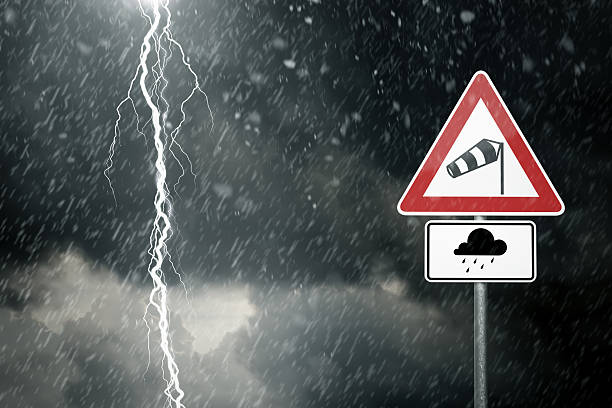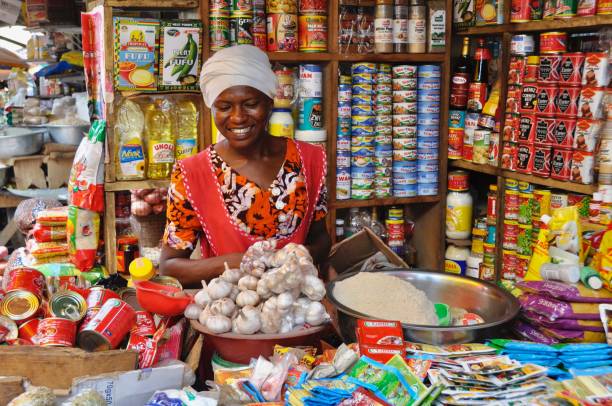Introduction
A nationwide Storm Warning has been issued by the South African Weather Service, urging citizens to prepare for severe weather, including heavy rainfall, gusty winds, and sharp drops in temperature. The alert warns of localized flooding in low-lying areas, possible road closures, and power outages.
Storms are unpredictable, but preparation makes all the difference. With the right steps, South Africans can minimize damage, prevent injury, and recover faster once the skies clear. Here are ten powerful ways to stay safe and protect your home, family, and community during severe weather.
Storm Warning: Know What the Alert Really Means
A Storm Warning is a direct call to take immediate action. When forecasters issue a Level 2 or higher warning, it signals the potential for significant disruption to daily life. This includes property damage, transport delays, and possible flooding.
Take every alert seriously—weather can change faster than expected. Understanding the difference between a “watch” (potential risk) and a “warning” (confirmed threat) helps you act promptly. Monitor updates from official sources such as SAWS, municipalities, and emergency services to stay ahead of changing conditions.
Storm Warning: Secure Your Property Beforehand
When severe weather is expected, prevention is protection. Clear gutters, drains, and yard debris to allow rainwater to flow freely. Secure loose items—bins, flowerpots, or tools—that can be blown around by wind.
Check your roof and windows for leaks and seal any gaps. Move vehicles to higher ground and away from large trees. If you live in a flood-prone zone, use sandbags or plastic barriers to divert water. These small steps can prevent significant structural damage and keep your home dry when storms strike.
Storm Warning: Build a Reliable Emergency Kit
A well-stocked emergency kit is your safety net during a storm. It should include:
- Flashlights or rechargeable lights
- Batteries and power banks
- Bottled water and non-perishable food
- First-aid supplies and essential medications
- Warm clothing and blankets
- Copies of ID documents and emergency contact numbers
Keep the kit in a waterproof container in an easily accessible spot. Review and restock it regularly. During a Storm Warning, access to shops or pharmacies may be cut off, so preparation ensures you can manage until conditions stabilize.
Storm Warning: Travel Safely or Stay Put
Storms transform ordinary roads into hazards. Flooded sections can conceal deep potholes or fast-moving water. Avoid driving unless absolutely necessary. If you must travel, reduce speed, increase your following distance, and keep headlights on.
Do not attempt to cross flooded bridges or roads. Just 30 centimeters of water can sweep a vehicle off the surface. For public transport users, check schedules before leaving home—many services may pause during severe conditions. It’s always safer to delay a trip than risk your life on the road.
Storm Warning: Protect Power and Connectivity
High winds and lightning strikes often cause power outages. Charge all devices and power banks early. Unplug electronics to prevent surge damage. Keep LED torches or solar lights nearby instead of candles, which pose a fire risk.
If you depend on powered medical devices, ensure batteries are full and have a backup plan in case electricity is interrupted. Radios with battery or hand-crank options are useful when mobile networks fail. Staying connected keeps you informed—and safe—throughout the storm.
Storm Warning: Manage Water and Food Safety
Floodwater can carry dirt, chemicals, and sewage, contaminating your environment. Store clean drinking water ahead of time in sealed containers. Keep a supply of easy-to-eat foods like canned goods, nuts, and energy bars.
Avoid consuming anything that has come into contact with floodwater. After the storm, disinfect surfaces and wash dishes with boiled or bottled water if the municipal supply appears cloudy. Good hygiene protects your health when infrastructure is under stress.
Storm Warning: Safeguard Informal Settlements and Vulnerable Areas
Informal settlements are often hit hardest by severe weather due to poor drainage and limited infrastructure. Local authorities and communities can reduce harm by clearing shared drains, reinforcing shelters, and identifying safe evacuation points.
If you live in a high-risk area, pack essential items in a waterproof bag and know your nearest emergency shelter. Stay connected through community WhatsApp groups or local radio broadcasts in your preferred language. Awareness and early action can save lives.
Storm Warning: Check on Neighbours and Family
Severe weather affects everyone differently. Check on elderly neighbors, single parents, and those with disabilities. Offer to help secure their homes or share emergency updates.
If you have spare resources—water, batteries, or food—consider sharing with those nearby who might not have had time or means to prepare. In times of crisis, collective safety grows from community care. Together, neighborhoods can weather any storm.
Storm Warning: Protect Your Business and Livelihood
Businesses must also respond to storm alerts. Secure signage, outdoor equipment, and vehicles. Move inventory and electronics away from the floor and unplug nonessential machinery.
Update employees and clients through social media or email about potential closures or schedule changes. For small shops and restaurants, check backup power options to preserve stock. Prioritizing safety keeps workers protected and ensures business continuity after the storm.
Storm Warning: Stay Updated and Filter Reliable Information
During storms, rumors spread quickly on social media. Follow only official sources like the South African Weather Service, reputable news outlets, and local emergency management pages.
Avoid forwarding unverified messages or outdated screenshots. False alerts can cause confusion and panic. Always check the date, time, and authenticity of updates before sharing. Being informed helps you make the right choices under pressure.
FAQs
What does a Storm Warning mean?
It’s an alert that severe weather, including heavy rain and flooding, is expected and may disrupt normal activities.
How can I prepare my home for a Storm Warning?
Clear drains, secure loose items, charge devices, and store clean water and essential supplies.
Is it safe to travel during a Storm Warning?
Avoid travel if possible. Flooded or damaged roads can be life-threatening even for experienced drivers.
Conclusion
A Storm Warning is a serious reminder that preparation saves lives. Every small action—from clearing gutters to charging phones—reduces risk and strengthens resilience.
By working together, sharing reliable updates, and helping those most at risk, South Africans can face storms with confidence instead of fear. Nature’s power can’t be stopped—but with planning and awareness, its impact can be greatly reduced. Stay informed, stay safe, and take each warning as a chance to prepare better for tomorrow.




